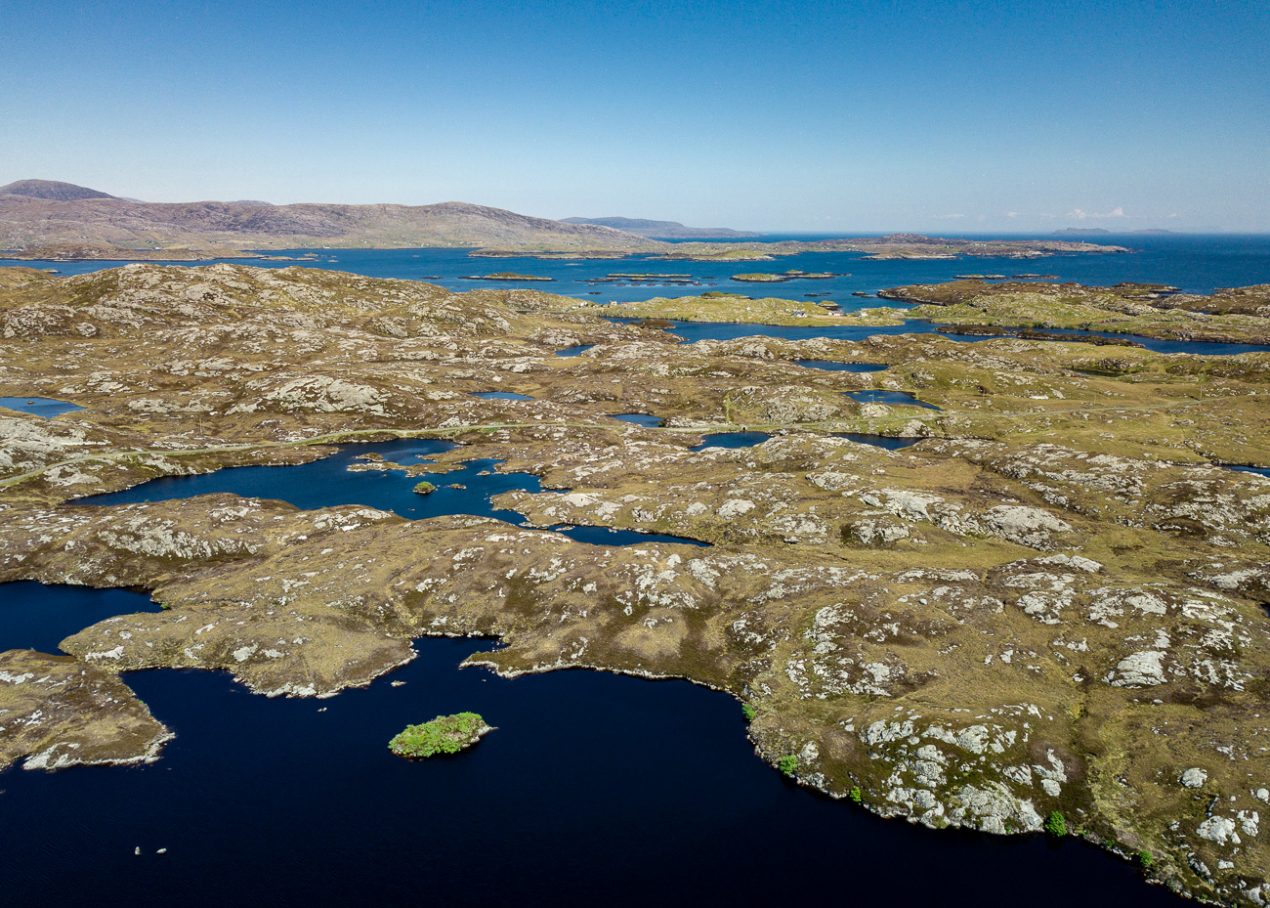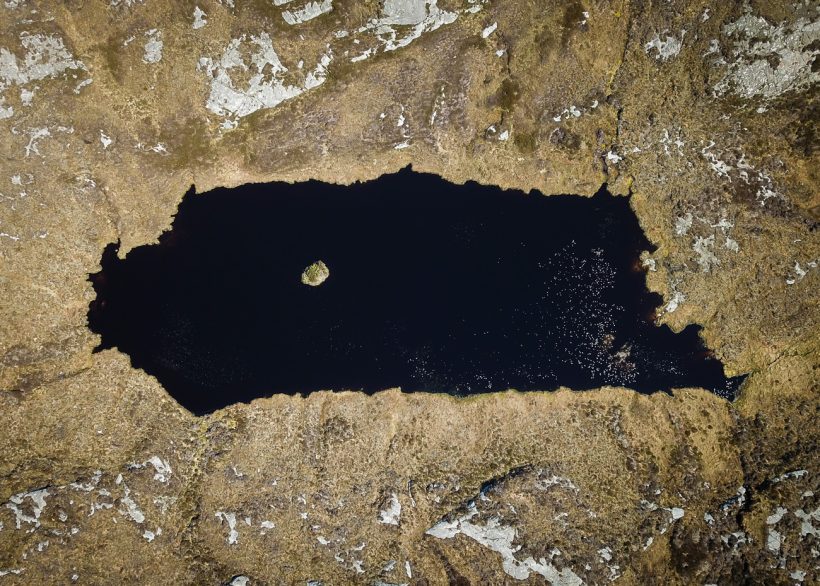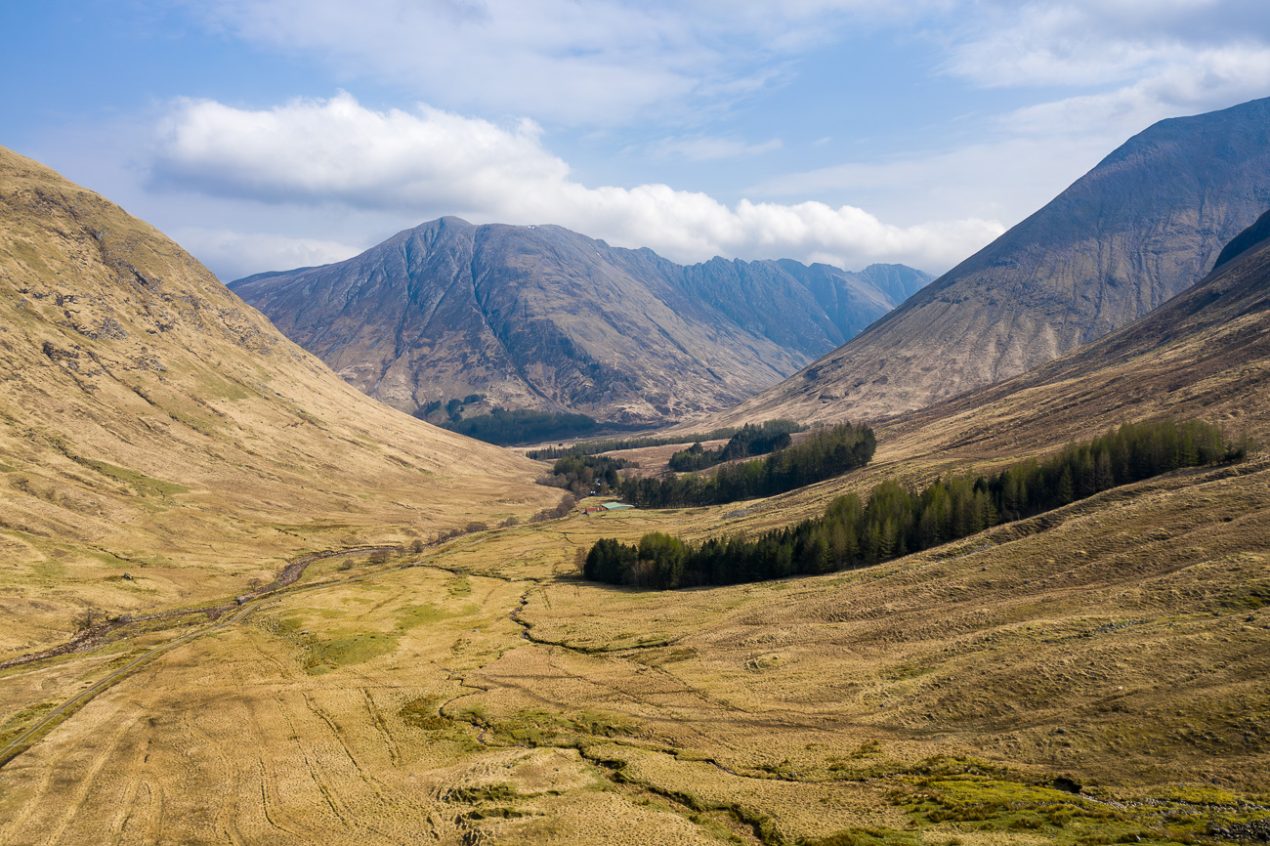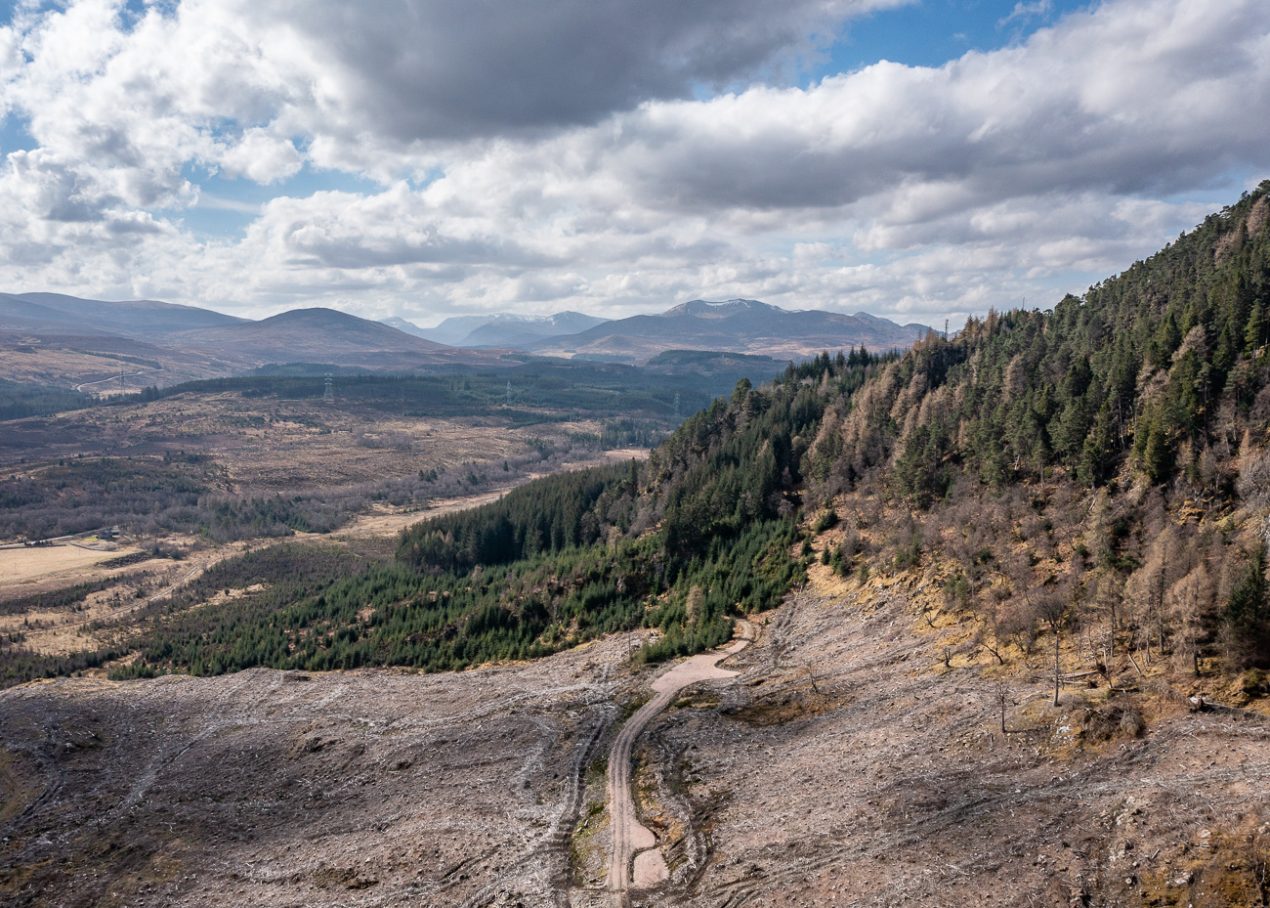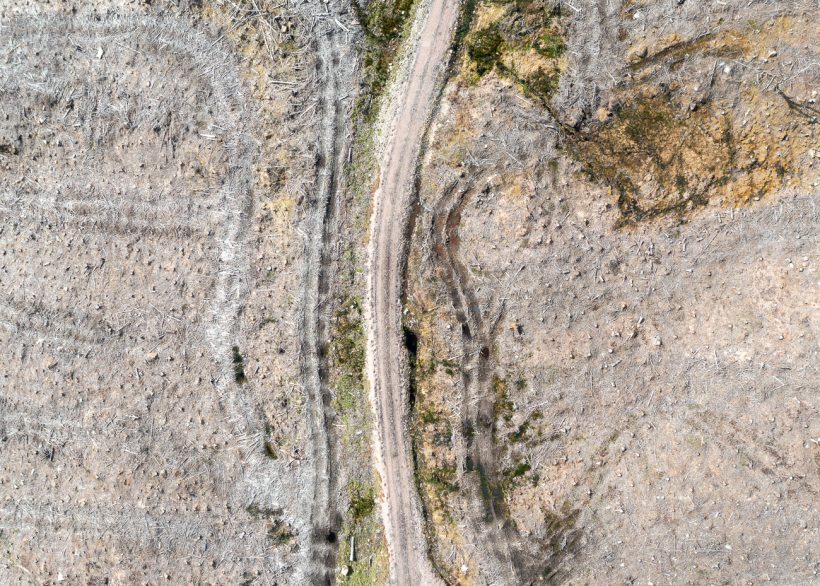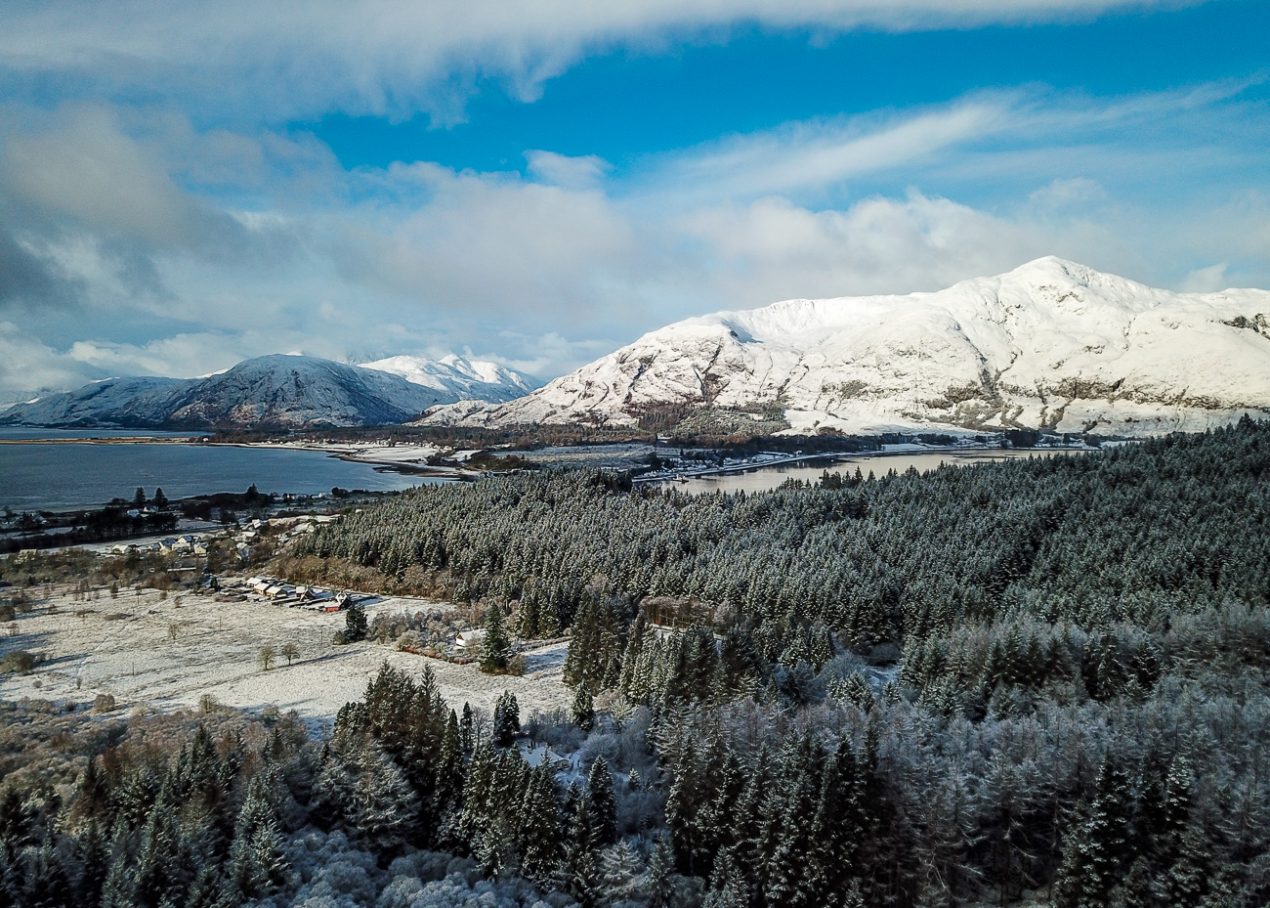Select an image to reveal What Lies Beneath…
Green Island
Islands act as natural refuges for plants, shrubs, and trees by providing protection from excessive grazing by deer and sheep. In areas where herbivores are abundant, their constant browsing prevents young trees from growing, stunts the regeneration of native woodlands, and limits plant diversity. However, on islands—whether naturally occurring or created by fencing and other conservation efforts—vegetation can flourish, offering a glimpse into how the landscape might appear if grazing pressure were reduced.
Plantation Edge
A stark divide between two landscapes—on one side, dense conifer plantation, on the other, overgrazed moorland. The abrupt transition highlights the human impact on Scotland’s uplands, where forestry and livestock farming create rigid land-use boundaries. The lack of natural transition zones affects biodiversity, with one side offering cover and habitat (albeit with poor biodiversity within plantations), while the other remains barren and unable to support regeneration. The line serves as a clear marker of how land management decisions shape ecosystems.
Clear Cut
The aftermath of clearcut felling transforms the landscape into a wasteland of stumps and scattered branches. From above, the ground appears scraped raw, logging tracks etched through the bare earth. While the remaining plantation still suggests forest, the wider view reveals the true scale of the operation—what looks like woodland is, in reality, a crop, planted and harvested like any other, but one that leaves landscape-scale scars in its wake.
Frozen Plantation
The lower slopes of many Scottish lochs are often dominated by plantations—predominately fast-growing Sitka spruce, grown to support the timber industry, bolster local economies, and reduce reliance on imported wood. Yet beneath their tightly packed canopy, little else thrives. Unlike native woodlands, which host diverse ecosystems, monoculture plantations suppress biodiversity, shading out undergrowth and altering the soil. These forests were planted to meet economic demand, but looking ahead, we face the challenge of balancing timber production with the urgent need for ecological restoration.
